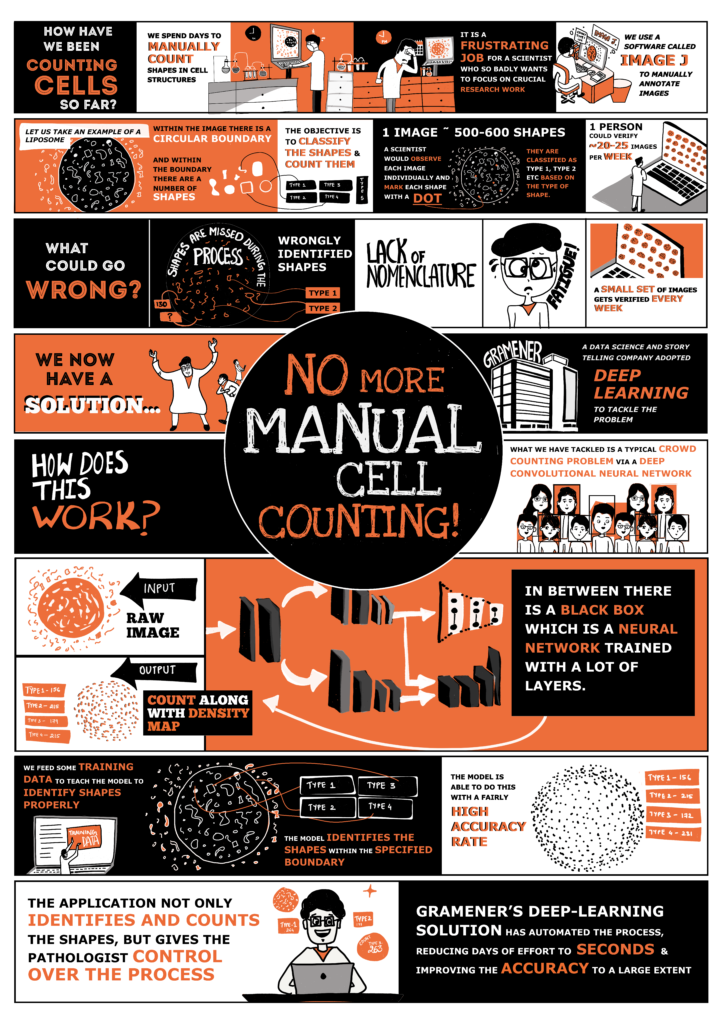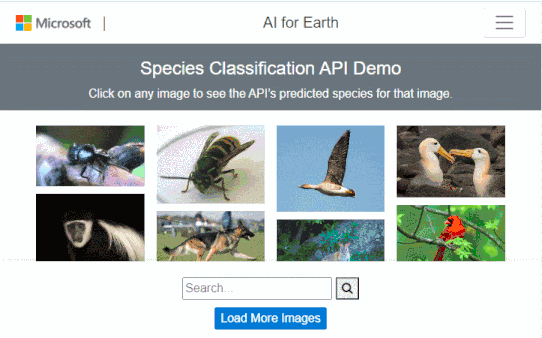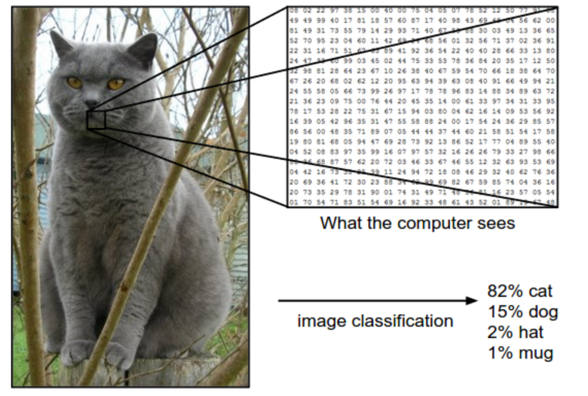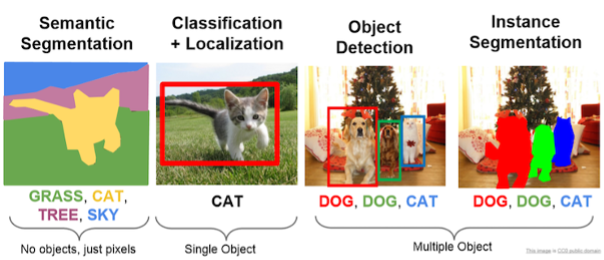Top companies are leveraging computer vision applications to solve complex challenges. Computer vision or machine vision AI has created a massive impact on industries such as agriculture, environment, automotive, manufacturing, retail and logistics.
However, there are multiple computer vision use cases that are still hidden. This article talks about a list of fast-growing and popular computer vision applications, computer vision examples, and use cases from prominent industries.
Table of Contents

What is Computer Vision?
Computer vision is an area of Artificial Intelligence (AI) that uses visual data and images to enable computer systems to gain a deep understanding of human visual tasks. This understanding helps the computer systems automate tasks such as event and object detection and recognition, scene reconstruction, video tracking, learning, estimating, image restoration, 3D scene modeling, etc.
22 Popular Computer Vision Applications from Industries
Computer vision applications are based on pattern matching. SIFT or Scale Invariant Feature Transform algorithm is used for feature detection in computer vision. SIFT helps identify the local features, called key points, in an image.
- David Lowe introduced the SIFT technology in 1999, and it soon became popular. It was around the same time that feature-based object recognition became the focus of computer vision applications.
- In 2001, Paul Viola and Michael Jones introduced the real-time face detection framework. This computer vision algorithm could learn which features helped localize faces.
- Another critical moment came in 2006 when the Pascal VOC project was launched. It made object classification easier by providing a standardized dataset as well as tools for accessing it.
- Then in 2009, Pedro Felzenszwalb, David McAllester, and Deva Ramanan developed the Deformable Part Model. This feature-based model could decompose objects into their parts and put geometric constraints between them. From here, it modeled probable object centers that were considered latent variables.
The breakthrough for computer vision applications came in 2012 when a team from the University of Toronto entered the ImageNet Large Scale Visual Recognition Competition. Their convolutional neural network model (AlexNet) got an error rate of 16.4%, an achievement itself. Since then, computer vision applications and APIs have been finding use across different business sectors.
Portable cameras in mobile devices and CCTV cameras are excellent data sources. They provide a vast array of images to process, which can create great computer vision applications.
Computer vision applications are being put to use in diverse fields such as medical diagnosis, production automation, recommender systems, and day-to-day activities such as shopping and driving. Companies are using computer vision applications to solve consumer and business problems.
Below are a few sectors and industries that use highly commendable and technical computer vision applications.
Computer Vision Applications for Healthcare
For the healthcare industry, computer vision applications have proven a godsend. These automated technologies have reduced the downtime for treatments and enhanced their efficacy. Below are a few computer vision applications for healthcare:
Medical Image Processing
The introduction of computer vision applications for healthcare is seen as a watershed moment in medical image processing or medical diagnosis. No wonder, since the machine learning and deep learning vision systems have surpassed humans in terms of accuracy.
These systems can help with the early diagnosis of fatal diseases. Instead of having to cue outside the cardiologist, radiologist, or neurologist’s center, one can now simply go to a medical diagnosis center with advanced computer-vision-based systems for quick and accurate diagnosis.
For example, now doctors can see an image of blood flow in the heart in minutes instead of hours. Earlier it took several hours of vivo scans to get the 3D volume cycles, but now the same is achieved with fewer in vivo scans.
The machine vision-based system correlates data of various subjects to analyze patterns for the neural networks. With interactive 3D visualization, medical diagnosis has become more accurate and efficient.
Automated Cell Counting

It is a frustrating job for a scientist who so badly wants to focus on crucial research work rather than sit and manually identify shapes for days. Gramener’s automated cell counting solution is a popular application of computer vision technology that helps pharma and healthcare biologists to do so. Moreover, the solution reduces days of effort to seconds and improves accuracy to a large extent.
What we have tackled is a typical crowd-counting problem via a deep convolutional neural network. In this approach, we have an input which is the raw image & the output – the count along with a density map. In between, there is a black box which is a neural network trained with a lot of layers.
What can be done with these layers?
The neural network uses them in order to assimilate whatever is given as input with the annotations and creates a Gaussian approximation – a means of concluding that a particular dot is surrounded by a circle. This black box will help identify that the shape is a circle and for a random image it still gives the density map.
Mask Detection
The coronavirus pandemic necessitated the use of masks for the prevention and control of Covid droplets expelled by an infected individual. In 2021 computer vision applications for medical mask detection became popular in the healthcare industry. Cab service companies such as Uber used face detection in their mobile apps to identify whether passengers were wearing masks or not. Similar applications were implemented across different kinds of public transport to enhance public safety during the pandemic.
COVID-19 Diagnosis
The coronavirus is highly infectious. Several frontline healthcare workers faced the wrath of this disease. While the swab testing method was fairly accurate, it wasn’t easy to maintain distance during the test. Thus, it was essential to find a no-touch detection method. X-ray-based Covid-19 detection was the result. Deep learning empowers these computer vision applications for X-rays.
Read More: Computer Vision in Healthcare: Benefits and Top 12 Use Cases
Computer Vision Applications in Manufacturing & Retail
Manufacturing and retail are two industries that have benefited from computer vision applications. ‘Customer is king’ is the adage that the retail industry runs by, and computer vision applications in the retail segment let the marketers know their customers. Computer vision applications in manufacturing help control quality and maintain the supply chain.
Below are some of the important computer vision applications in manufacturing and retail:
Customer Tracking
Customer tracking in the manufacturing industry is one of the most useful applications of computer vision. Cameras are strategically hidden on shelves and other places around the physical retail store to track the movement of the customers. Moreover, these cameras track the customers’ facial expressions as they pass by different shelves and note where and how much time they spend. Machine learning systems then parse all this data to understand what items are preferred by the customers and also to prevent stockouts.
Crowd Counting
This technique counts the number of people in an image or a video. The dataset is collected from public places such as concerts, malls, theaters, downtown, etc. Thus, with the help of computer vision applications, the Cascaded Neural Network computes the density map and counts the number of people in an image.
Theft Detection
The same cameras used for customer tracking also capture details of the movements and activities of suspicious individuals. With computer vision applications, retailers use this data to monitor and prevent any malicious activity or theft. People seen accessing off-limit areas are warned by the store staff.
Social Distancing
The Covid-19 pandemic has given birth to several needs, one of them being social distancing. It is not possible to stay in a lockdown forever, but it is also not possible to risk people’s lives. Thus, companies use social distance detectors to assess the distance between people at the store, whether employees or customers. These applications of computer vision determine the distance, these depth sensors create a red or green circle around the employee or customer.
Quality Checks
Since computer vision applications can identify the distinguishing features of different products, they have a special place in industrial quality control. Applications of computer vision in manufacturing and retail help identify features such as the size, shape, texture, and color of a product and sort or grade it accordingly. Thus, this helps in minimizing losses and take corrective action where possible. A robust computer vision application system can efficiently carry out quality control tasks 24/7.
Automated Inspections
With computer vision applications, 3D scans of products and components in the manufacturing and retail line are available. These scans are beneficial in the automobile industry to identify faulty parts promptly and control production line disasters. In the fruits or pharmaceuticals industry, items need to be packed according to number, and wrong items should be separated from the packaging line. Computer vision applications help with automated packaging inspections.
Read More: Computer Vision for Defect Detection in Manufacturing
Computer Vision Applications for Automotive
For a long time, the automobile industry has been working on automated vehicle classification systems. Technology has progressed and has become more affordable. In the automotive industry, the following computer vision applications are popular:
Lane Tracking
Self-driving cars are a reality because of computer vision applications. These cars depend on computer vision for vehicle detection and lane tracking that use deep learning techniques and algorithms. Automated lane tracking helps cars stay on track to prevent accidents. Thus, this prevents accidents and allows a safe driving experience for automated vehicles.
Vehicle Detection
There are CCTV cameras, LiDAR, i.e., light detection, and ranging thermal imaging devices, available at affordable prices. These can help in automated vehicle damage detection, tracking, and classification. Accurate Vehicle classification requires more than one imaging sensor. Construction sites have special use of vehicle detection applications. These applications can help with monitoring for safety, assessing productivity, and assisting managerial decision-making.
Traffic Signs Detection
A smooth ride causes no harm on the way. Over-speeding at a low-speed zone or skipping a traffic signal is undesirable, especially for a self-driven car. Deep learning enabled computer vision applications to help vehicles in detecting traffic signals and avoid any mishaps.
Pathfinder
When humans travel across specific routes, they discover which roads are smooth, which courses have potholes, and which ways are traffic nightmares in peak hours. They store this information in their brain, and it helps them navigate better in future travels. The pathfinder computer vision application is similar. PathNet and other such computer vision algorithms help driverless cars in planning and driving safely.
Computer Vision Applications for Agriculture
In the field of smart farming, computer vision applications have proven their prowess by helping agritech companies and farmers improve crop yield. Let’s look at a few more use cases in precision agriculture where computer vision applications are aggravating profoundly:
Crop Monitoring
As consumers, we want to buy the best quality cereals, grains, pulses, and other food products. While the farming community has been ensuring that we get the same, computer vision applications for agriculture have brought more efficiency to the process. Crop monitoring applications enable continuous monitoring of crops without causing them any harm. They also keep plant growth and nutrient requirement response in check. Thus, farmers get alerts of the slightest malnutrition-related changes in plants, and they can adopt timely corrective measures.
Drone Crop Analysis
We have all seen drone cameras capturing memorable moments at weddings. But drones have much more extensive use, and drones with cameras are currently being deployed for crop analysis as well. Computer vision algorithms analyze the camera images to detect crop diseases, low water zones, weak crops, and other problems. Security agencies are also using this technology to check on illegal crop cultivation.
Irrigation Management
Maintaining soil water balance is essential for good-quality crops. Computer vision applications for agriculture enable the monitoring of soil water balance, thereby helping in irrigation planning. UAVs or uncrewed aerial vehicles can take multi-spectral images and analyze the vegetation index helping in decision-making for irrigation management.
Animal Monitoring
Animal monitoring techniques help track and count animals, identify behavior changes, detect diseases, and monitor birth in animals. Furthermore, scientists and wildlife conservation teams can use these techniques to watch wild animals from a distance.
Yield Assessment
Through deep learning-enabled computer vision applications for agriculture, farmers can now manage soil requirements, detect crop maturity, and do crop yield prediction. Spectral analysis of images obtained through UAVs helps in yield assessment and crop management decision-making. Thus, citrus crop yield assessment and sugarcane yield assessment have been carried out using these technologies.
Here we have gained an in-depth understanding of computer vision applications in different fields. There is broad scope for future applications of computer vision in industries that are slow on uptake.
Computer Vision Applications for Environment
We see the world around us under constant natural and unnatural threats. There are wildfires, floods, earthquakes, volcanic eruptions, wars, and the like. All of these are affecting the earth’s atmosphere and its biodiversity. As an intelligent species that shares the biome of this planet, we have the responsibility to conserve. Undoubtedly, computer vision applications have provided a ray of hope for the conservation of biodiversity. Gramener’s computer vision projects and AI for Good solution aims to restore back what we have taken away from our planet.
Species Classification & Monitoring

API designed by AI for Earth Species Classification identifies and classifies over 5,000 plant and animal species. The API runs on the AI for Earth API backend which makes it easy for researchers working on machine learning for environmental science and sustainability to start building APIs and web-based applications.
Automated Fish Counting
Manually identifying and classifying any living species through captured videos is resource-intensive as well as takes time and cost. So, when the Nisqually River Foundation, a Washington-based nature conservation organization, encountered a similar challenge to measure and monitor the Salmon species fish identification, they approached us for an automated technology-driven solution.
We trained Deep learning AI models to draw bounding boxes around each fish crossing the camera. The entire workflow encapsulated in a Web App automated the process of video feed input, detection, and classification. Furthermore, the automated AI solution leveraged the latest implemented deep learning algorithms using the Microsoft Azure and Cognitive Services platform stack.
Penguin Counting With AI Vision
Antarctica’s penguin populations are at serious risk. A study from the British Antarctic Survey tells that the world’s largest Emperor penguin colony has suffered breeding issues for the past four years. Hence, there is a big chance that they won’t stand the ongoing and projected climate change, and could virtually disappear by the year 2100. In order to study penguin populations, researchers first need to accurately count them.
A new crowd counting solution from Gramener could enable researchers to use computer vision to count penguin populations faster and more accurately. The model uses a density-based counting approach to count the number of penguins in clusters of different sizes from the images.
How Does Computer Vision Work?
Computer vision works the same way as the human eye does. Human vision is fed by years of visually perceived data. Computers are artificially provided with visual data through videos, images, and algorithms. The computer system then parses all the visual data. The system then classifies images into a category, identifies specific objects, and tracks them in videos.
Computer vision works on the hypothesis that the brain identifies and decodes patterns to discern individual objects. So, computer vision systems work on pattern recognition.
Millions of images of similar things, say dogs, are fed to the computer system. The computer will recognize the patterns identical to all dogs and, in the end, create a model “dog”; hence, whenever the computer receives images, it will accurately discern whether there are any dogs in them or not.
People often confuse computer vision with image processing. While both these fields work with visuals, image processing is more like a subset of computer vision. More aptly, image processing is one of the many techniques that computer vision uses to gain a high-level understanding of visuals. Thereby not just seeing but also comprehending the images.
In his article, Image Processing and Computer vision, Golan Levin, gives the technical details of how machines interpret images.
In simple words, the computer identifies objects in the pictures by analyzing the pixels in them. Each pixel has its color values. In essence, a computer sees an image as an array of numbers.
For a black and white photo, this array is in one dimension. For colored images, this array is 3-dimensional, with the first dimension representing red, the second representing green, and the third representing blue.
The image below illustrates how a computer sees an image:

Here we can see how the computer does image classification. The computer uses deep learning techniques and image classification to learn the distinguishing characteristics and features of different objects automatically.
Based on the various features and characteristics, the machine predicts which thing is on the image alongside a probability of what else it could be.
A distinguishing feature of machines is that they can perform visual tasks at a speed much higher than humans. Computers use deep neural networks to achieve this efficiency.
It is these capabilities that enable computers to carry out tasks such as face recognition and surveillance. Several technology-related tasks also work effectively together, such as semantic segmentation, classification + localization, object detection, and instance segmentation.

The deep neural networks in computers are similar to the neural networks in the human brain. When a human meets another human, both of them store information about each other’s names, looks, clothes, accessories, voice, and behavior. When the same humans meet again, their neural networks are activated, and they instantly recognize each other by retrieving the old information from their memories. This process called feature matching is similar to the deep learning architecture in computers.
Build Custom Computer Vision AI Solutions with Us
Contact us for custom built low code computer vision solutions for your business challenges and check out ESG and AI solutions built for our clients, including Fortune 500 companies.
Book a free demo right now.

